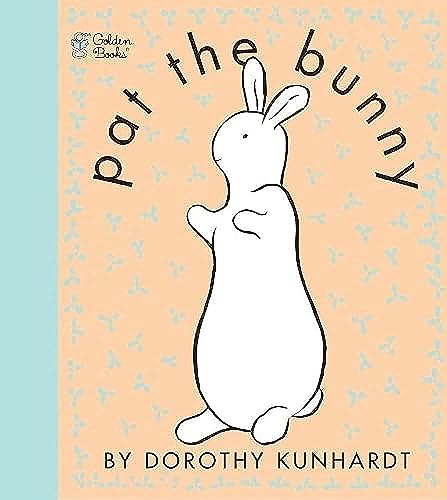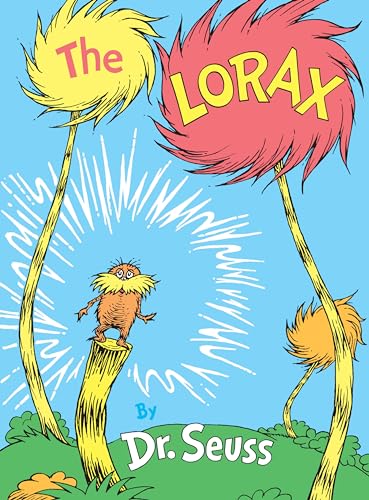The books that parents read to their very young children don’t change much from generation to generation. When my son was born two years ago I was surprised to find that with few exceptions, the titles we welcomed into our Philadelphia apartment were the same ones that three decades earlier had served as my own introduction to storytelling.
I made an informal study of the Amazon sales rankings of the books I enjoyed having read to me most as a kid. It seemed to confirm that taste in books for young children is remarkably constant. Here are just a handful of popular titles with their publication years and their overall Amazon ranks:

 The Very Hungry Caterpillar (1969), #169
The Very Hungry Caterpillar (1969), #169
Goodnight Moon (1947), #227
Where the Wild Things Are (1963), #314
The Giving Tree (1964), #342
Harold and the Purple Crayon (1955), #559
Pat the Bunny (1940), #743
Richard Scarry’s What Do People Do All Day (1968), #817
For comparison’s sake, consider Thomas Friedman’s The World is Flat, which was a bestseller only a few years ago and enjoys strong residual sales. It’s currently ranked #2,194, which leaves it well behind the leading titles in the Dr. Seuss canon (Green Eggs and Ham, #1,050; The Lorax, #1,063).
The reason children’s books endure seems clear enough: The books that toddlers read are determined entirely by adults, and when adults select books for kids they naturally gravitate towards the books they loved as kids. As a result, the market for children’s books is probably more resistant to cultural churn than just about any other slice of the consumer economy; it’s a closed circuit that reproduces itself one generation after another.
There are benefits to this system. For one, it helps to ensure that passing fads doesn’t wash quality books away. It’s doubtful, for example, that toddlers would opt for Goodnight Moon as often as their parents do, so maybe it’s just as well that they don’t have a say. For two, the persistence of children’s books yields a kind of experience we don’t get so often in a culture that has relatively few traditions: the chance to revisit childhood experiences through an older set of eyes.
 Just the other weekend I took my two-year-old son to Barnes and Noble to buy a birthday present for a friend of his. I browsed the aisles while my son emptied a carousel of Berenstain Bears books onto the floor. After a few minutes I spotted Caps for Sale (#5057), a book that had once meant a great deal to me but which I had not thought about in decades. It was nice to see that it had managed to last all this time without my attention. We bought two copies, one for the friend and one for us.
Just the other weekend I took my two-year-old son to Barnes and Noble to buy a birthday present for a friend of his. I browsed the aisles while my son emptied a carousel of Berenstain Bears books onto the floor. After a few minutes I spotted Caps for Sale (#5057), a book that had once meant a great deal to me but which I had not thought about in decades. It was nice to see that it had managed to last all this time without my attention. We bought two copies, one for the friend and one for us.
That night I put my son in his pajamas, filled his cup with milk, sat him in my lap and began to read Caps for Sale. It only took a few lines before the entire story came back to me: an old world peddler walks around a village with a stack of caps on his head; one luckless afternoon he leans back against a tree to take a nap and when he wakes up he finds his caps have been confiscated by a troop of monkeys in the tree branches above him; he demands the monkeys give him his caps back by shaking his fists and stomping his feet but the monkeys mock his efforts and for a moment it seems like he’ll never get them back.
In addition to remembering the plot, I was somewhat stunned by how vividly the feelings the book had elicited in me as a kid came tumbling back. It’s noted several times in the book, for example, that the peddler always stacks his caps on his head in the same order—“first his own checked cap, then the gray caps, then the brown caps, then blue caps, then the red caps on the very top.” As I read this to my son I found myself flush with the same covetousness for the red caps, so bright and distinct above the rest, that I’d felt as a child.
I had a similar experience at the end of the story. In order to get his caps back, the peddler remonstrates the monkeys every way he can: he shakes his fists, stomps his feet, jumps up and down. The monkeys repeat his actions back to him but the simple peddler doesn’t see what’s going on. He thinks the monkeys are mocking his suffering when really they’re just aping (monkeying?) him like the lower-order mammals that they are. In despair the peddler takes his own checked cap off his head—the one cap that’s not for sale, and the only cap the monkeys didn’t take—and throws it to the ground and starts to walk away.
As my son finished his milk and started to fall asleep, I found myself awash in the same anguish I’d felt at this point in the story as a child. I couldn’t have explained why at the time, but as a child I knew there was something deeply sad about the peddler throwing his own cap to the ground. Now as an adult, I can put words to that sadness; I can see that by throwing his own cap to the ground the peddler is effectively saying that without his caps, nothing in the world matters anymore.
I was surprised by the complexity of the reaction to Caps for Sale I’d had as a kid. As a four-year-old I had no firsthand experiences that would have taught me there is such a thing as despair in the face of an unforgiving world, but on an intuitive level I understood that what the peddler was experiencing went beyond mere frustration.
When the peddler throws down his cap the monkeys throw their caps down too, and tragedy is averted. The peddler collects his caps from the ground, stacks them back atop his head, and walks back to town calling “Caps for sale, fifty cents a cap.” It is not exactly a happy ending—the fact that the peddler became so desperate over the loss of a few caps reveals just how precarious his life really is—but there is a melancholic satisfaction in knowing that he gets to go on selling for one more day at least.
For me, the feeling I had after I’d closed Caps for Sale and laid my son down in his crib was melancholic and satisfying, too. It was an unexpected gift to have glimpsed myself as a child through the pages of the book, and a wonder to imagine that if trends hold, my son might one day have the same experience himself.
Bonus Link: Are Picture Books Leading Our Children Astray?








